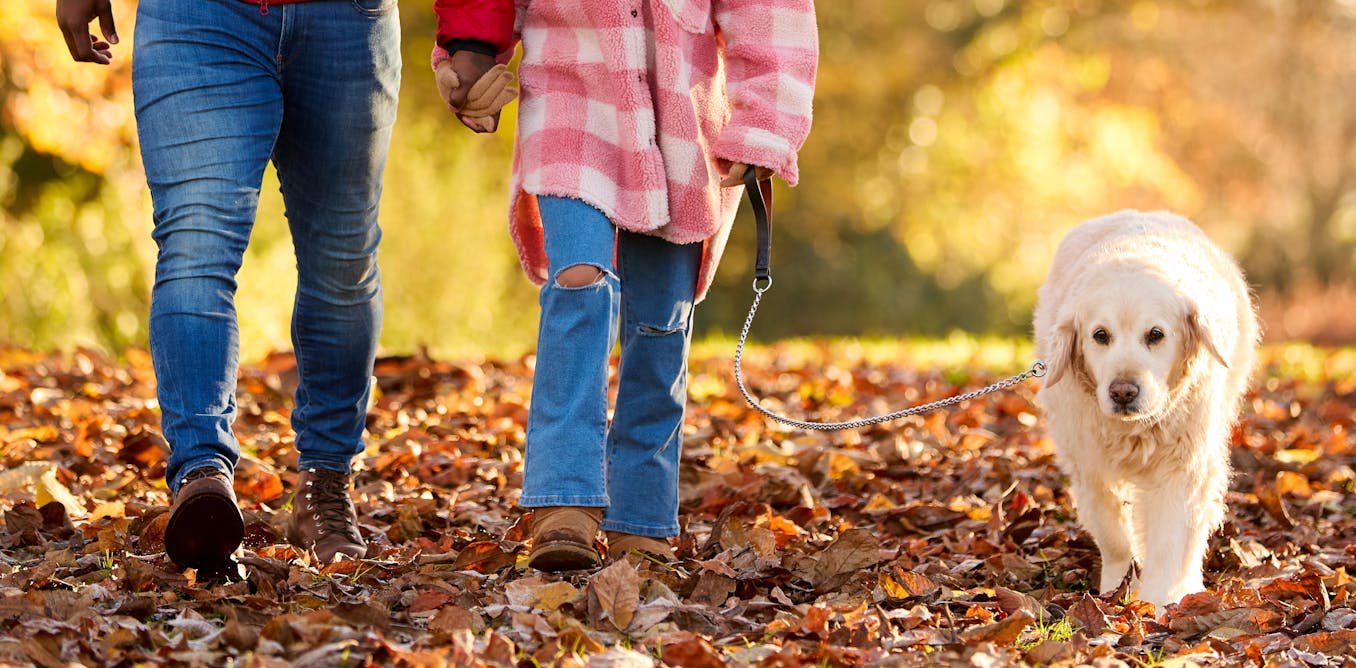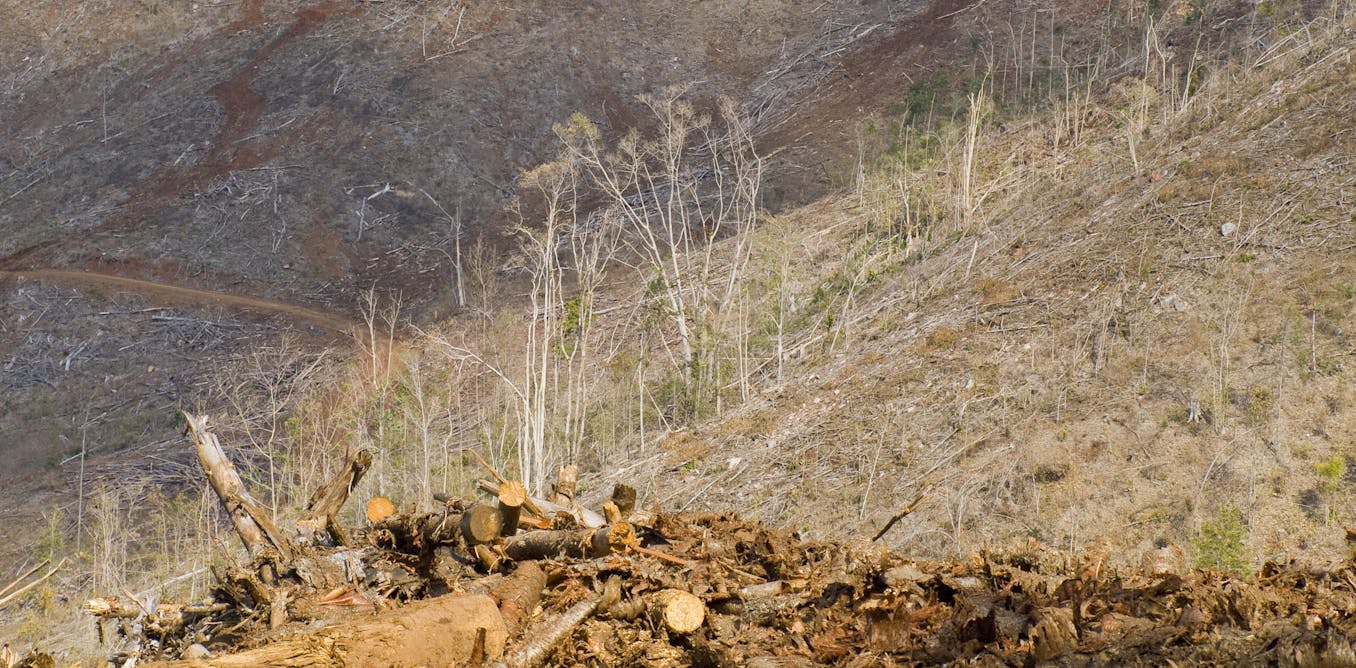Like millions of people, we have experienced the physical and mental health benefits, as well as the simple enjoyment, of a daily dog walk. However, amid the UK’s growing population of dogs (around 13.5 million at the latest estimate), recent reports have highlighted growing concern about how dogs affect wildlife and ecosystems.
Potential issues include disturbance or active chasing of wildlife, spreading of diseases and parasites, and water pollution from flea and tick treatments.
By collaborating with more than 40 organisations from the Wildlife Trusts to the Dogs Trust, we have created a new guide to explain and help manage the effects of dog walking on biodiversity, based on current evidence.
The Renew programme, a research collaboration between the University of Exeter and the National Trust, takes a “people in nature” approach to address complex challenges like this. We reviewed the existing scientific literature and mapped the relationship between current dog densities and England’s protected habitats.
We found that dog walking can have negative environmental consequences including substantial effects of disturbance, pollution and disease in some places.
Get your news from actual experts, straight to your inbox. Sign up to our daily newsletter to receive all The Conversation UK’s latest coverage of news and research, from politics and business to the arts and sciences.
We then discussed these findings in workshops with specialists in dog behaviour, biodiversity conservation and land management. We explored what dog walkers and landowners can do to minimise the disturbance of wildlife and ecosystems, while still enabling public access to natural spaces for people and their dogs.
One of our key findings was that different organisations and landowners take very different approaches to managing dog walking on their sites, which is inconsistent and can be confusing for dog walkers. There are also multiple voluntary codes for responsible dog walking, including the countryside code, the Kennel Club’s canine code, the National Trust’s canine code, and Forestry England’s dog code.
While these codes often share central principles, they differ in specific guidance and level of detail. To address this, land managers could take a more standardised approach to managing dog walking – based on a shared code for dog walkers, and different zones of access for land managers.

Soloviova Liudmyla/Shutterstock
We recommend such a zoning approach should employ a traffic-light system, highlighted by coloured pawprints. Green zones would welcome dogs without restriction and ideally provide dog-friendly facilities.
Amber zones would require “paws on paths” (that is, keeping dogs on marked trails) and, in the presence of livestock, dogs on leads. Red zones would indicate sensitive sites in which dogs aren’t allowed, such as areas of lowland heath where birds nest on the ground or beaches where young seal pups are resting.
Zone colours might change depending on the time of year – this is already common on beaches, which often have seasonal dog restrictions. As long as the signage is clear, our idea is that wherever a dog walker finds themselves, they will know what is expected of them.
More zones, less disturbance
Some organisations and sites, including Dorset Dogs and the Holkham Hall estate in Norfolk, already use zoning approaches to reduce incidences of wildlife disturbance. But as was recently demonstrated by the legal battle over wild camping on Dartmoor, public access to land is a sensitive topic in the UK. Restrictions meet resistance because they can impinge on what for many is considered a basic freedom – to access the outdoors with one’s dog.
Consequently, meaningful engagement with dog owners and local communities when designing zoning is vital. Perhaps counterintuitively, simply increasing restrictions on access to land may actually exacerbate disturbance from dog walking, as people, dogs and protected areas become crowded together in the same landscapes.
A zoning approach that also involves creating new green pawprint zones for off-lead dog walking, where access elsewhere is restricted, would ensure that no access to wild places is lost overall.
The effects of dog walking on the environment are linked to broader social and cultural factors, including people’s knowledge and skills when it comes to managing their dogs’ behaviour. But other factors include the availability of facilities such as dog poo bins, and the widespread use of “spot-on” flea and tick treatments – pesticides that are applied directly to the fur and can contaminate the environment more than medication given orally.
In our Paws for Thought workshops, the research team found that emphasising how the health of people, animals and ecosystems are all interconnected resonated with our participants more than focusing on wildlife protection alone.
Dogs are vital companions for many of us – but unfortunately, their presence and behaviour can cause problems for other species. Rather than demonising dogs and their owners as environmental threats, collaborative, evidence-based approaches can help create accessible spaces for people, dogs and wildlife.

Don’t have time to read about climate change as much as you’d like?
Get a weekly roundup in your inbox instead. Every Wednesday, The Conversation’s environment editor writes Imagine, a short email that goes a little deeper into just one climate issue. Join the 45,000+ readers who’ve subscribed so far.

The post “A traffic-light system for dogwalkers could protect breeding birds, seal pups and other wildlife” by Sarah Crowley, Senior Lecturer in Human and Animal Geography, University of Exeter was published on 06/11/2025 by theconversation.com

































Leave a Reply